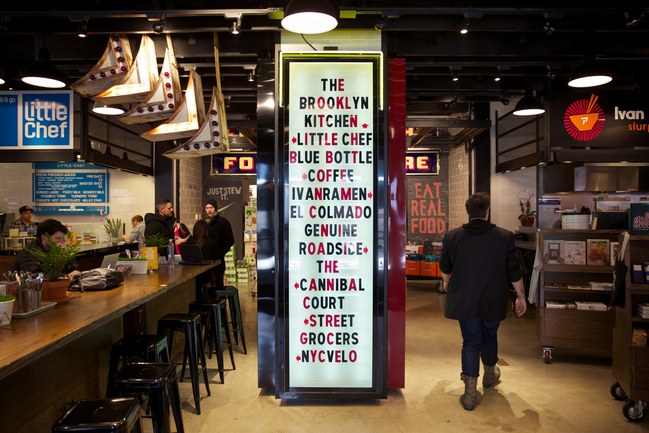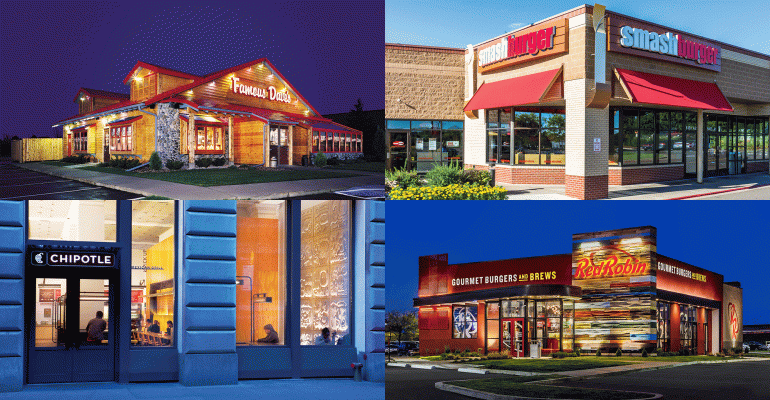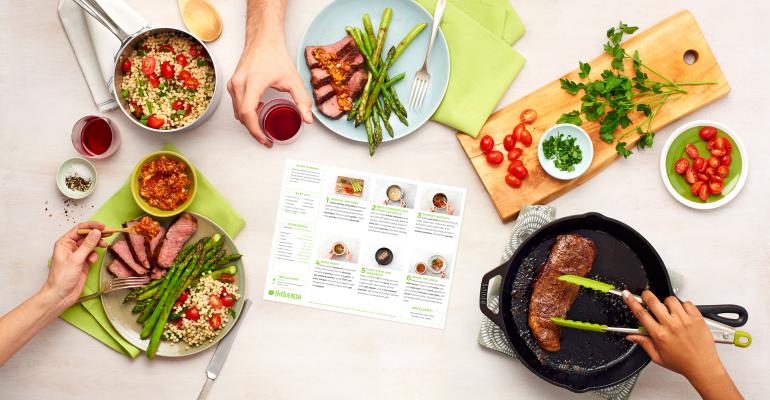
Dec 16, 2017
Andrea Strong | Eater | December 13, 2017
In early October, Danny Meyer made a big announcement. It wasn’t about tipping, or another iteration of the Shake Shack hot chicken sandwich. This one was different. He would be entering the world of private finance, starting a $200 million investment fund, with stakes in reservation-making app Resy and the New York City-based Joe Coffee. His fund, Enlightened Hospitality Investments LP (EHI), now joins a group of newly formed investment funds cleverly eyeing (and investing in) restaurants.
It’s quite an about-face from the climate just a decade ago. “Ten years ago, investment took place much farther down in the growth cycle of a concept,” says Greg Golkin, who co-founded the Kitchen Fund in 2016 to invest in early-stage scalable restaurant concepts. “You would see private equity funds or strategics coming in when brands were at scale. If you had an early-stage restaurant concept, you had to source capital from high-net-worth friends and family, or from family offices [a more formal version of investment vehicle for high-net-worth private individuals]. There was no strategic capital in the space early on.”
What’s moved the needle for many investors — and caused the creation of new funds like EHI and the Kitchen Fund, and the frenzied interest of growth investors like L. Catterton, Roark, and Karpreilly, who had previously taken positions in Chopt, Primanti Bros., Burger Lounge, California Fish Grill — is the fast-casual revolution.
“It used to be that when you opened one restaurant, you had one restaurant until you were so busy that you could not serve one more meal,” says Basu Ratnam, founder of Inday, a healthy Indian fast-casual restaurant, one of the Kitchen Fund’s first investments. “Then you thought about number two. But now, there’s a different mentality. Now you have people opening with immediate plans to scale.”
That’s in part because “away from home eating” has skyrocketed in recent years. In 2015, for the first time ever, people in the U.S. spent more money dining out then buying groceries, according to data collected by Bloomberg.
The high-return allure of the success stories like Shake Shack, Chipotle, and Sweetgreen has also made investors hungry to get in early on the next big idea. Entrepreneurs are listening, creating restaurant brands that promise investors growth and scalability. The fastest-growing categories are healthy fast-casual concepts like salads and grain bowls, “as well as anything that focuses on sustainability and organics,” says Anish Gandhi, managing director at the investment bank Brookwood Associates.
Gandhi is also seeing interest in Mediterranean concepts like hummus and kebabs and “multi-ethnic” concepts like Sushirrito and Velvet Taco. Velvet Taco, which debuted in 2011 and opened its second location in 2014, offers dishes like chicken tikka tacos and received a significant strategic growth investment from private-equity firm private equity firm L Catterton in 2016. It now has seven locations across the country.
CONTINUE READING

Dec 5, 2017
Elizabeth Dunn | The New Yorker | November 29th, 2017
In 2010, the chef Todd English opened an indoor market in the basement of the Plaza Hotel, in Manhattan. Back then, the term “food hall” was still largely alien to many Americans. It belonged to Britain, to describe the section of a department store where one might buy tins of loose-leaf tea and Christmas hampers, or pause for a glass of champagne. Todd English’s version stuck close to that mold, mirroring “the aesthetics of the finest food-specialty markets throughout the world,” and it was an overwhelming success. In its wake, the American food hall flourished, and took on a life of its own. Some included butcher shops, or bakeries, or kitchen-supply stores. Others focussed solely on prepared food, such as bánh-mì sandwiches or tacos, served over the counter by local venders. A dominant aesthetic emerged: exposed ductwork, cement floors, subway tile, and long, wooden communal dining tables. Anachronisms like New York City’s Chelsea Market and San Francisco’s Ferry Building, once called “marketplaces,” were duly rechristened. In 2010, there were a couple dozen spaces that fit the definition in the United States. Garrick Brown, who studies the topic for the real-estate-services company Cushman & Wakefield, anticipates that there will be three hundred by the end of next year. In Manhattan alone there are now at least sixteen food halls, with many more in planning or construction. A project by Anthony Bourdain, in the meatpacking district, intends to cover a hundred and fifty-five thousand square feet, nearly the size of three football fields.
In contrast to the food court, with its Auntie Anne’s and Panda Express, the food hall eschews big chains in favor of local, artisanal purveyors, dazzling the visitor with a vision of a thriving economy of small businesses operating side by side. It is tempting, therefore, to see the proliferation of the food hall as a victory for the little guy. This is not entirely accurate. Much of the current expansion is driven by property developers grasping for ways to reinvigorate moribund shopping centers, or to gin up interest in new developments. Traditional retail is waning; millennial consumers, the marketing consensus tells us, aren’t interested in “stuff” so much as in experiences—as well as choice, convenience, “authenticity,” and things that make good photographs. You can see where the food halls come in. The markets themselves can provide landlords a healthy income, but, to those looking to offload high-rise apartments or office space, they offer prospective tenants something even more stirring: an amenity. Drop a food hall into the mix, and the whole development basks in the soft, Edison-bulb glow of the small food businesses inhabiting its ground floor, luring tenants with the siren song of pour-over coffee and craft beer.
Gotham West, a luxury apartment complex on Manhattan’s far west side, was among the first to cotton on to the idea, in 2013. A developer like Gotham can offer a persuasive pitch to chefs struggling to raise enough money to open a stand-alone shop: minimal startup expenses, short-term leases, and rents that, while expensive on a square-foot metric, come in well below the total cost of a larger conventional restaurant space. What’s more, the food-hall developer provides marketing and handles hassles like wiping down tables, washing plates, and paying the gas bill. Think WeWork, but for restaurants.
CONTINUE READING

Nov 30, 2017
Jonathan Maze | Nation’s Restaurant News | November 15th, 2017
Declining same-store sales and traffic, and growing fears of an upcoming recession, have not scared off investors in restaurant concepts and franchisees, bidding up the prices for companies well past historical norms.
That, at least, was the general sentiment among attendees at this week’s Restaurant Finance & Development Conference in Las Vegas.
Speaker after speaker described a financing and acquisition environment in which buyers outnumber sellers, including private equity groups, strategic buyers and family offices. That’s driven up prices for some concepts to historically high levels.
“I haven’t seen an environment like this in many years,” said Chad Spaulding, managing director with industry investor Capital Spring. “There’s a tremendous amount of institutional and private cash flow chasing restaurant assets.”
Lending for these acquisitions, meanwhile, is flourishing, fueling much of the activity as the buyers can get relatively low rates from banks to make these acquisitions.
“The industry has been growing for eight years,” said Nick Cole, head of the restaurant finance division at Wells Fargo. “Supply has gotten out ahead of demand. The economy is showing signs of a recession. It’s already the third-longest expansion in history. If you’re a lender and thinking of a new five- to seven-year loan commitment, you might be thinking prospects in the future might not be healthy.
“Apparently, if you said that you’d be firing up the loan engine right now, you’d be right. Capital is still pouring into this industry.”
Sales of restaurant companies have been numerous this year. Just this week, for instance, the Canadian company MTY Food Group acquired the burger company The Counter, while the private equity firm TPG Capital acquired Mendocino Farms. And Roark Capital submitted a bid to buy Buffalo Wild Wings Inc.

Nov 13, 2017
Jonathan Maze | Nation’s Restaurant News | November 10th, 2017
Chains are slowing growth and cutting units in 2017 amid weak sales and traffic.
After years of seemingly unstoppable growth, the restaurant industry has stepped on the brakes in 2017.
Several chains in their latest earnings calls have said they plan on slowing unit growth or stopping it altogether amid weak same-store sales and traffic, as well as concerns over rising construction and real estate costs.
Many others, meanwhile, are closing units, as those sales and traffic challenges create underperforming locations that lose money and hurt overall profitability.
Here’s a look at the chains that are closing locations or slowing their growth this year or next.
CONTINUE READING

Oct 17, 2017
Lisa Jennings | Restaurant Hospitality | October 10, 2017
The already heated competition for butts in seats in the independent restaurant industry is about to get hotter. But the biggest threat to market share comes not from the restaurant down the street, but from outside the industry.
Restaurant operators may soon see themselves losing guests to the local grocery store offering cooked-to-order meals and table-service, along with a full bar.
At the same time, the young-but-full-of-potential meal-kit industry is also out to steal diners from restaurants, offering quality and unique ready-to-cook-dishes — often at a lower price — directly to consumers where they live.
And there’s potential cross over between the two. Grocery stores are also beginning to offer meal kits to appeal to the growing number of consumers who don’t know how to cook, or don’t want to.
This year e-commerce giant Amazon bought the specialty grocery chain Whole Foods Market, a move that has sparked a wave of speculation about how Americans will be enjoying the home delivery of all manner of fresh ingredients and pre-prepped meals in future.
Behind both of these trends is a common theme: Time-starved diners across the country are looking for convenience.
Consumers want to eat well, but the pull of the couch at home is strong. The one-stop shopping of the “grocerant,” and the home-delivered ready-to-cook meal kit give diners two more reasons to skip the neighborhood bistro.
In the spirit of knowing one’s enemy, here’s a look at the growing threat from grocery stores and meal kits.
Grocery stores get into the restaurant business
For years, restaurants have had to compete with grocery stores, with their in-store delis, rotisserie chickens and salad bars.
Last year, however, eating meals outside the home surpassed those eaten at home, and the grocery industry felt the jolt of a shift in consumer behavior.
In May, grocery spending grew just 2.6 percent year-over-year, compared with a 4.8 percent increase at restaurants, according to credit card company Visa’s Retail Spending Monitor.
Seeing that shift, grocery stores are looking for ways to increase foot traffic and win that spending back.
CONTINUE READING





